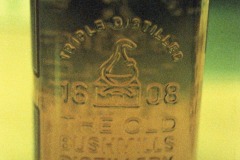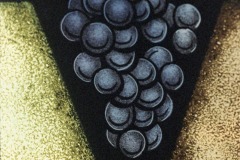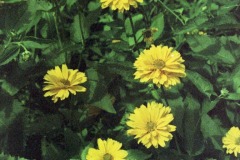While looking through a box of memorabilia, I came across two rolls of unopened Kodak Elite Chrome II 400. Not exactly sure why I had it — it could have been leftover from when we retired our film cameras at work, or I could have purchased it hoping to do more slide work.
Looking at the boxes, I knew it was pretty old. There’s a promotion on the pack to win a trip to New Zealand as a tie-in with The Lost World: Jurassic Park, which came out in 1997. Sure enough, the expiration date was 1999…more than 20 years past its prime. And since it hadn’t been refrigerated (in fact, the box had spend some time in a garage ), who knew if it was any good?
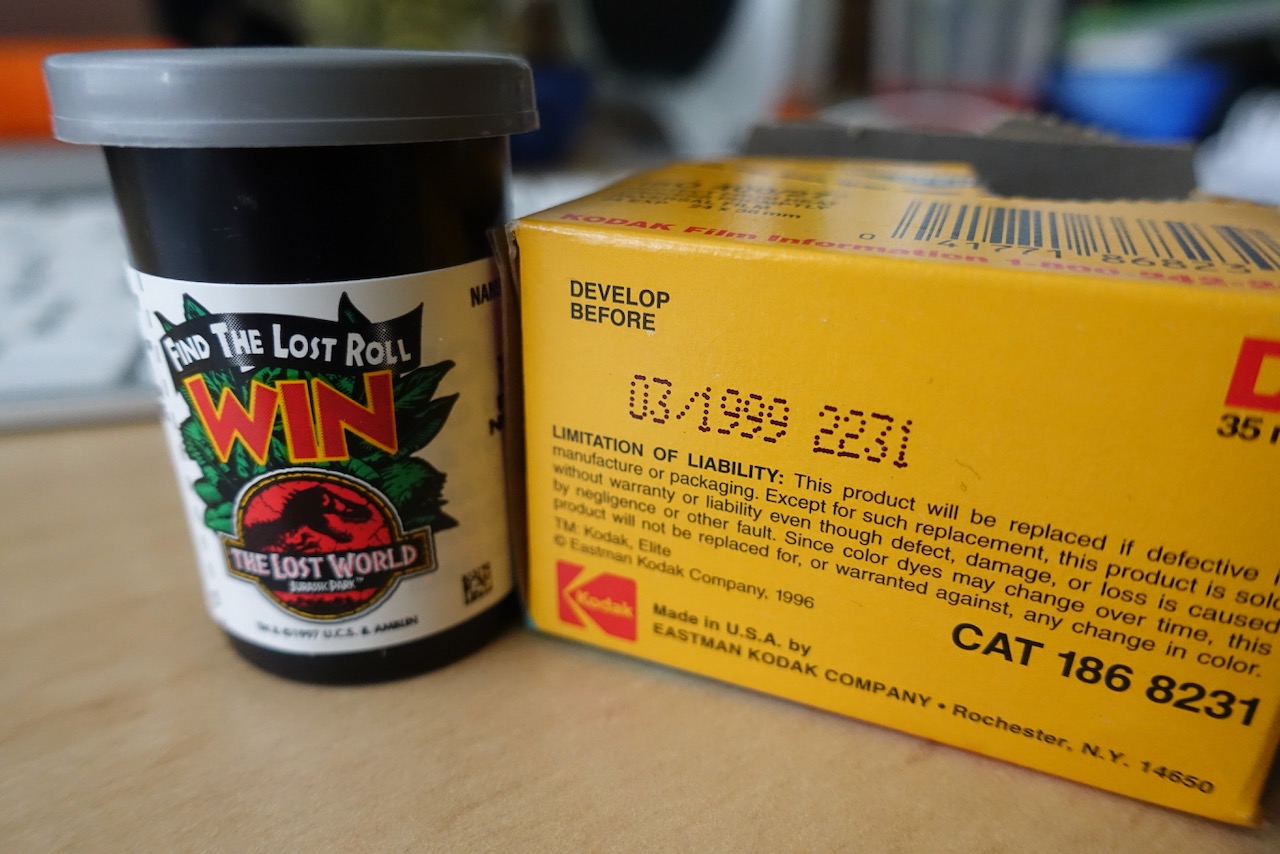
Well, I was destined to find out. I had fond memories of shooting it for work, and was up for giving it a whirl. Kodak Elite Chrome II was a 400 speed slide film, useful in lower-light conditions like office or factory space, and for cameras with slower lenses. It was pretty grainy even when fresh, but the colors were good, and if the images I was shooting were reproduced, they printed small.
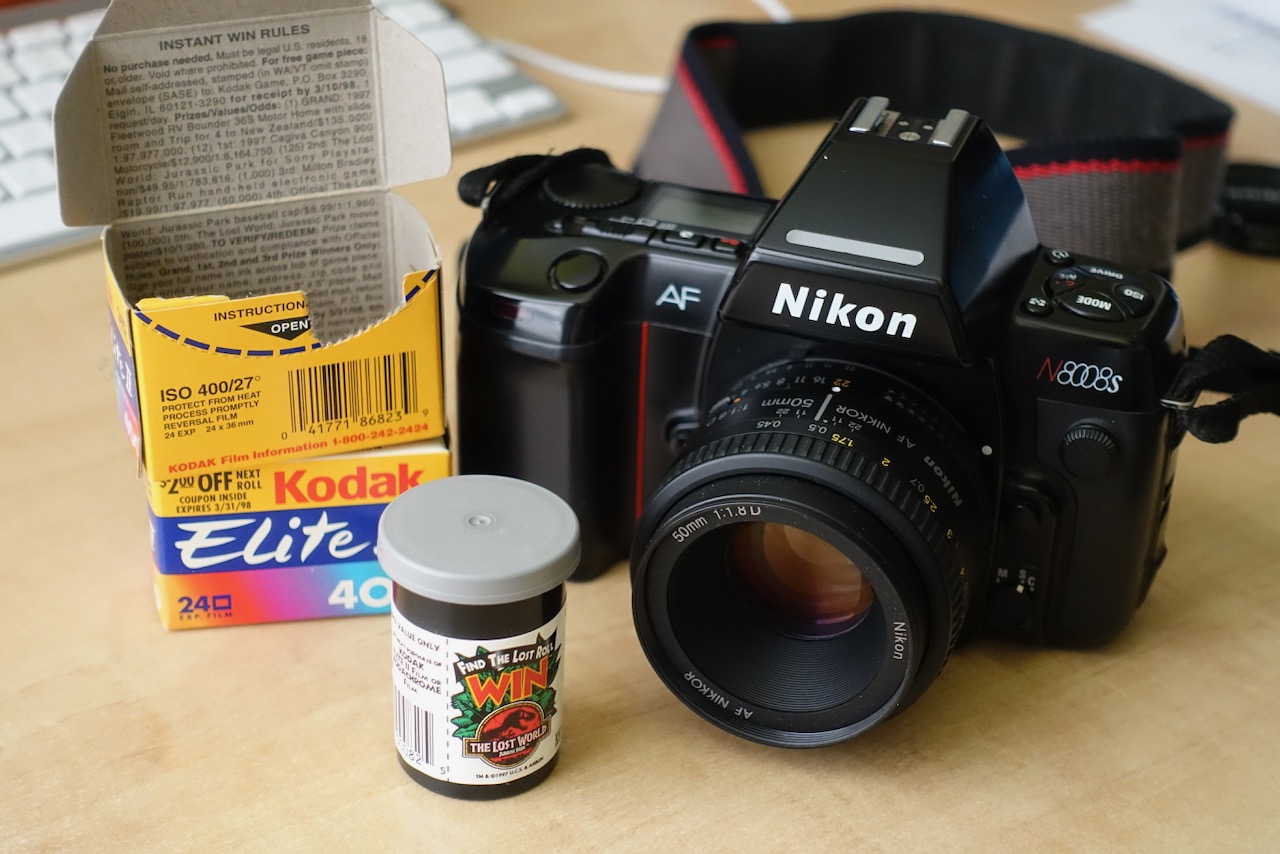
I shot the first of the two rolls in October 2020, using my trusty Nikon N8008s. At the time, I had begun dabbling in older manual film cameras, but figured my best bet to get some decent images out of it was to use a camera whose meter I trusted and had always delivered great results (plus, it was the camera I used when I first shot Elite Chrome…)
Using advice for shooting expired print film, I rated it at 200 ASA, a full stop brighter than box speed. I shot colorful leaves, garden harvest, Halloween candy, and late-season flowers to get as much color onto the film as possible. When done, I sent it to Dwayne’s Photo in Kansas for processing.
And when I got them back I was disappointed with the results (not with Dwayne’s — they did great work on a fresh roll of Velvia I had sent with the same order). The slides were all very faded, with a distinct yellow cast. Part of that could have been my overexposure, but I chalked most of the issues up to the film being old.
I scanned the slides at the scanner’s original setting, then tried a second scan after monkeying with the exposure settings. This images weren’t that bad, but none were ones I’d consider keepers. See below.
Something a little different
After that experience, I was loathe to shoot — and pay to process — the second roll. It sat on my desk for almost two more years when I got an idea: why not shoot it as a cross-processing experiment?
Cross processing is when you process slide film in print film chemicals, or vice versa. It’s taking film designed for E-6 processing and running it through C-41 process. It turns slide film into negatives, often with unforeseen color nuttiness. I prefer my slides to be slides and print negatives to be print negatives, but this expired Elite Chrome gave me an excuse to try the technique.
I’ve been processing color film since 2020, using Cinestill Film’s Cs41 two-step development kit. I’ve done dozens of rolls (it’s very economical — 20+ rolls from $30 in chemicals); I had a batch of developer and blix that were nearing the end of their life, so I figured why not give them one more chance?
So, while on vacation in the Catskills, I decided to load the second roll into a Canon A2e, another early 90’s camera with a solid meter that I was still testing out after purchasing it for $30 from Roberts Camera. This time, I shot it at box speed, again seeking out subjects with as much color as possible to see what the expired film could do.
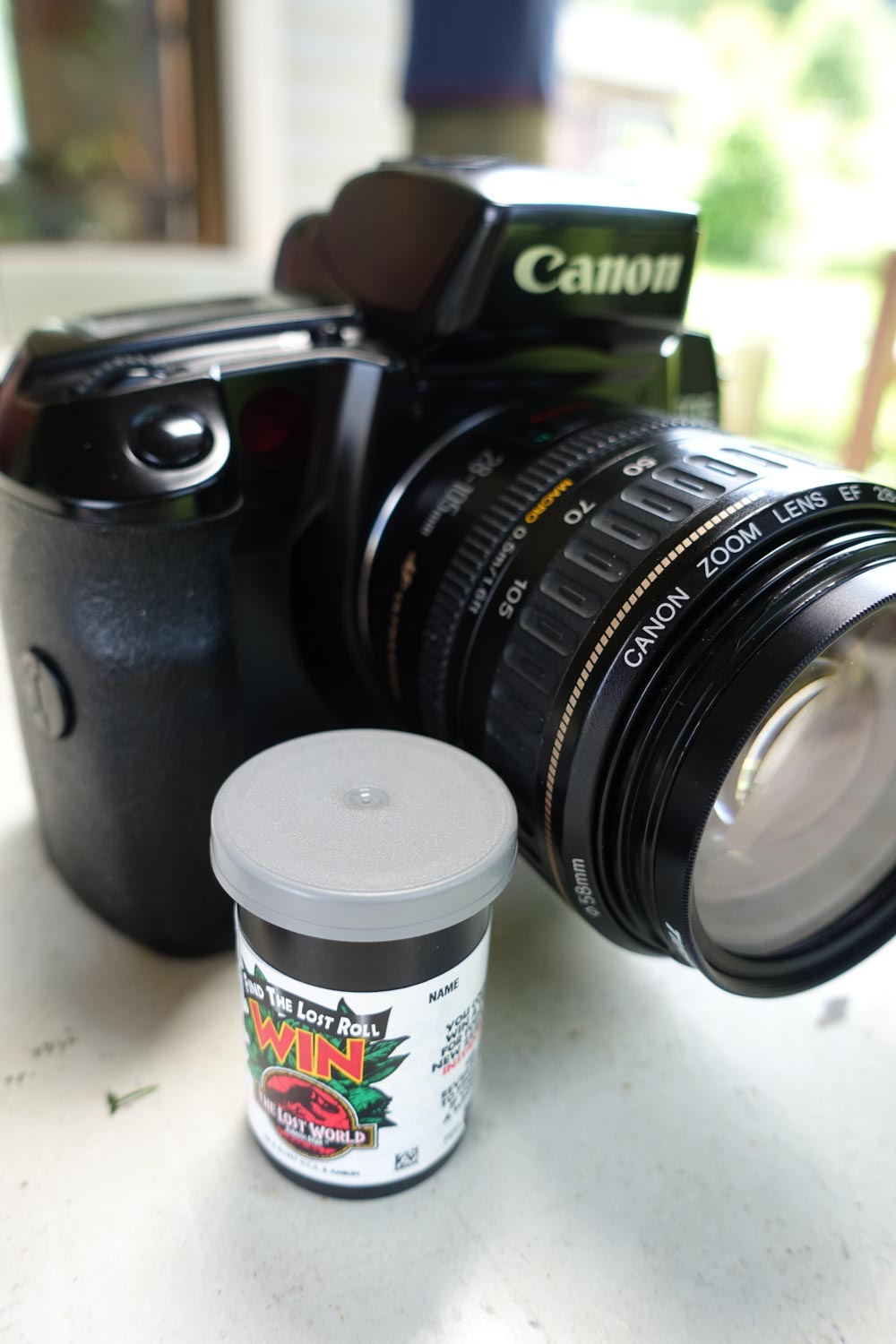
Once finished, I processed it in Cs41. I usually do a water pre-soak when I process color; with this roll, what came out of the pre-soak was bright yellow. I added a little extra development time given the age of the chemicals. After blixing and rinsing, when I pulled the film out of the tank, it appeared to be a milky dark green, and I didn’t see much of an image. I hung it as usual on the clothesline in my basement using medium binder clips and was concerned at how the negatives looked…not very exciting at all.
As the film dried and the emulsion cured, the milkiness faded and the negatives took on a dark green color; whereas normal color film has the brown/orange negative look, this was a dark green color.
The next morning, I scanned the negatives on my Epson V550 scanner as color negative film. I tweaked the color curves only a little when scanning. Here are some samples.
There was one odd thing with both these rolls — the last shot on each had some strange markings that looked almost like light leaks. Now, both rolls were shot in different cameras with no light leaks, and were processed relatively quickly after shooting. As these were the last shots, they were closest to the inside of the roll. Perhaps there was a crack in the spool? Who knows…
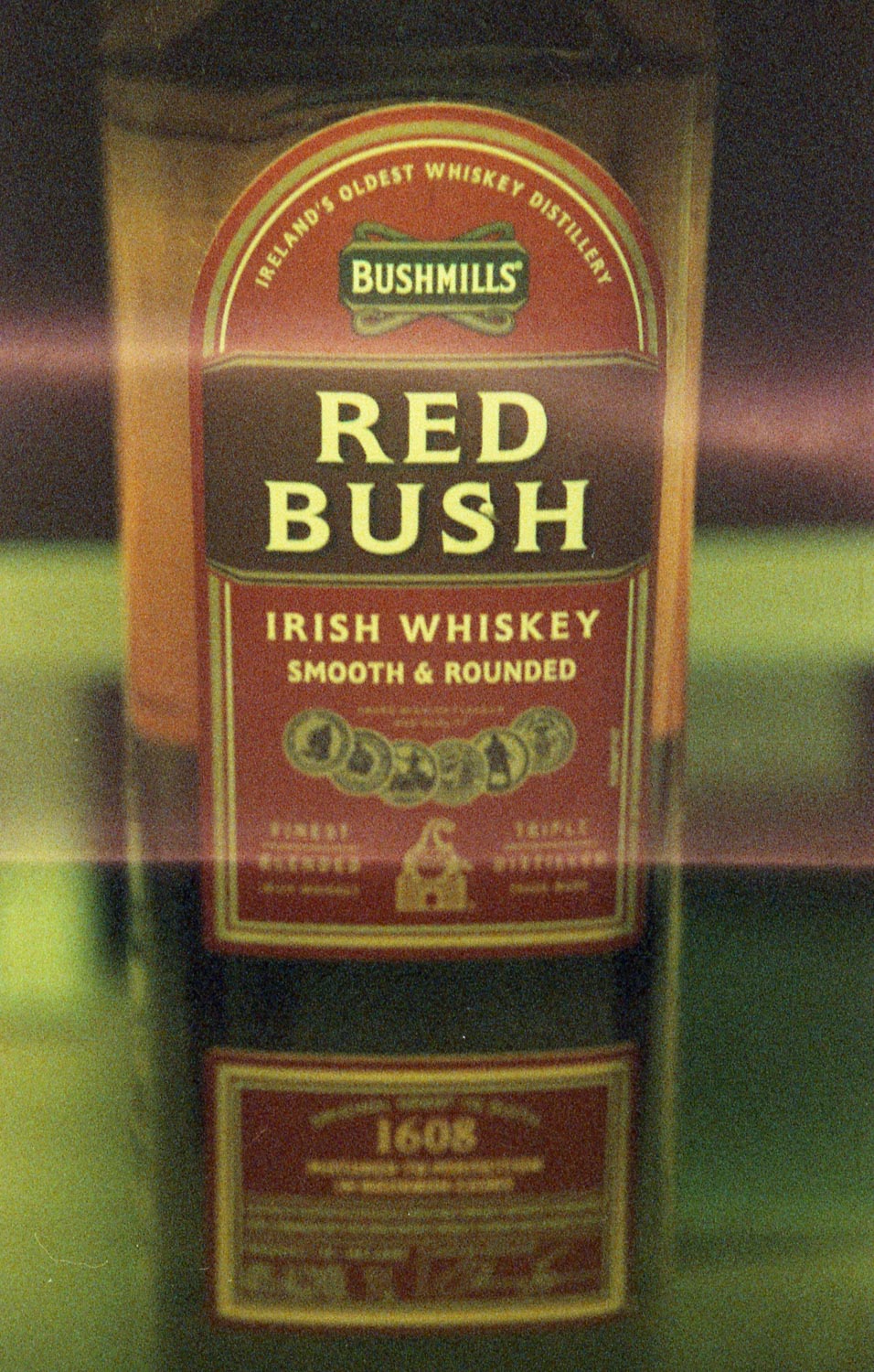
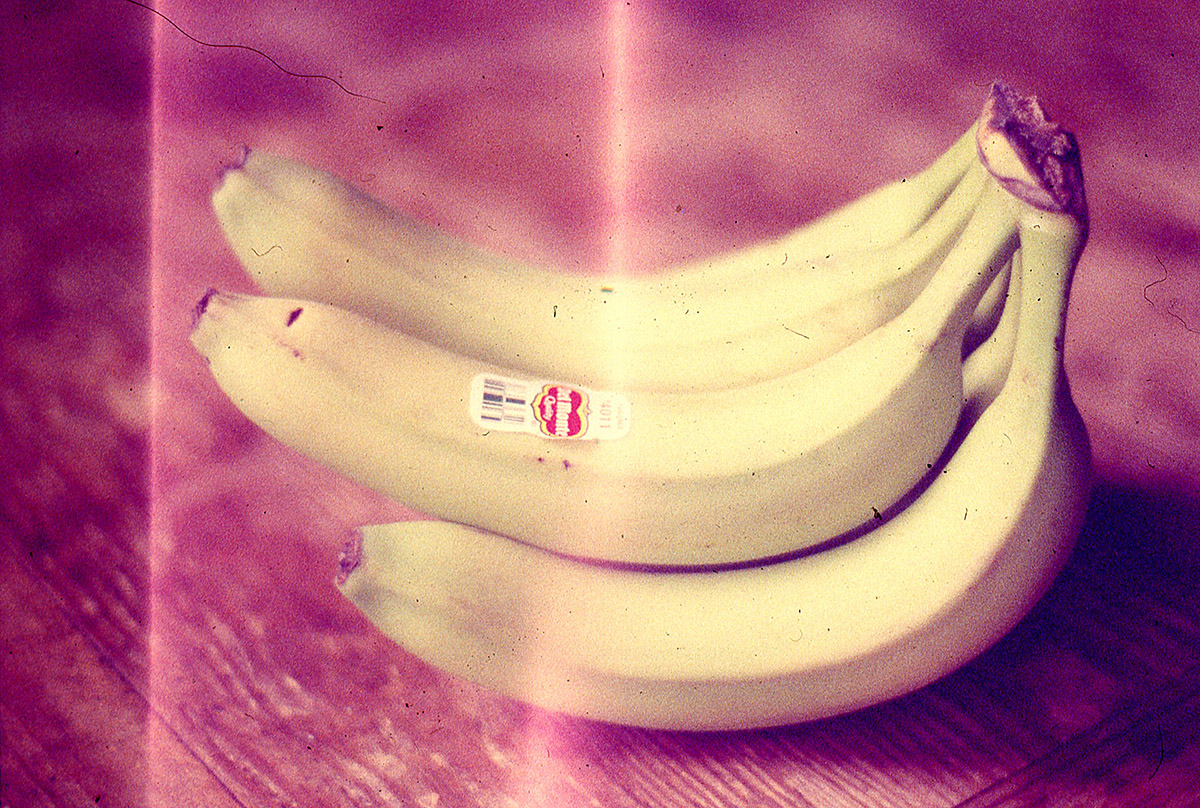
My impressions? The cross-processed colors were definitely funky. Overall, the images had a decidedly green cast. They were also very grainy, which I attribute to a combination of the 400 ASA of the film and underexposure. They were also a little noisy — the DigitalICE in the scanner didn’t seem to kick in — not sure if it was the software or the green backing of the emulsion that caused that. But with a little tweaking, some of the scans made for interesting viewing.
Why did I do this?
With the current shortage of film available these days, we need to shoot whatever we can get our hands on, and not let anything go to waste. I’m fortunate to have a good stock of fresh and frozen film to work with, but I couldn’t see letting these old Elite Chrome rolls stay unexposed…especially since 400 speed slide film is incredibly rare (note: JCH’s soon to be released FuguFilm 400 is a new 400 speed reversal film emulsion…looking forward to getting my hands on some!)
While on one hand, I’m disappointed that expired film does what it does — that is, funky colors, weird contrast shifts, heightened grain, reduced sensitivity, etc. But on the other, shooting the expired stuff gives us an opportunity to experience the unexpected and see the world in a different light.
So for future expired film finds, what would I do? I think both standard E-6 and cross-processing each offer a creative outlet. Since we know going in that the colors are going to be off and the results unexpected, it comes down to the aesthetic we hope to achieve. In this run, the E-6 provided washed out, yellow-tinged colors, but a finer grain; the cross-process had more vibrant color density, but with a definite green cast and coarse grain.
The other factor, at least in my case, is the fact that I can process the C-41 myself, while I need to send the E-6 out for processing. Sometimes, that $10-$15 difference in what it costs to get results does make a compelling argument.
In the end, I enjoyed shooting these rolls and learned a lot from what I got out of them. With the stock of fresh/frozen unexpired film I now have in-house, I will likely shy away from expired materials unless I make an unexpected find…like two rolls of 400 ASA slide film with Jurassic Park promos on the box…










